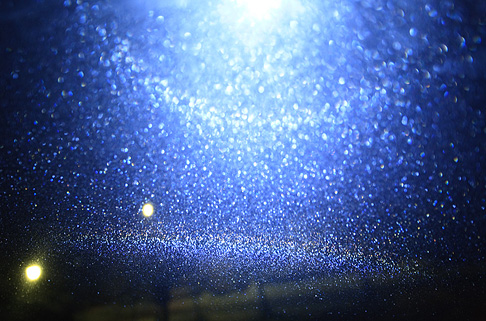
Photos and videos of the windshield halos seen on the night of 26/27 January in Tampere are now available in two galleries ( 1 – 2 ). The display was dominated by plate and Parry oriented halos. Circumzenith and circumhorizon arcs were strong as were the upper and lower suncave Parry arcs. Parhelic circle and 120° parhelia were also well developed. Less conspicuous were the subhelic arc ( 3 ), upper sunvex Parry, 46° Parry and the blue spot. Additionally, two unidentified features were seen.
We did not photograph the crystals, but we think the display was formed in frost crystals that have their basal or prism faces parallel to the windscreen. Both populations could be separate crystals, but also 90 degree crossed crystals could be a consideration. Visually the frost seemed rather grainy, which suggests compound crystals.
The halos were observed with a LED lamp pointed through the windshield as well as with reflected light (the lamp on the same side of the windshield as the observer). By moving the lamp we were able to observe in real time the transformations in halos that occur as the light source elevation changes (4). Videos show the shift between circumzenith and circumhorizon arc. There are also peculiarities. One is that the parhelia does not seem to move much further from 22 halo as the lamp elevation rises.
Both two unidentified features were documented. The other one was found from the video: in the video, far below parhelic circle at around 120 azimuth, appears a vertical pillar (5). The other effect was a diffuse arc that was seen when we lit up the windscreen from the front of the car and watched it from behind the lamp. This elusive effect was documented in a video (6).
After hours of documenting we ended the night by taking a ride and videoed the halos as they swept the windshield. As we neared a streetlamp, first one to sweep the screen upwards was the lower suncave Parry followed by circumhorizon arc. Then, as the lamp was overhead and behind, parhelic circle swept the screen downwards. If the lamps were a bit further on the side relative to our driving line, then also 120 parhelion was seen on parhelic circle.
It was a great night. In those six hours that we spent worshipping this complex display, we learned all the time more on what we were seeing and created new tricks to take photos. Certainly this winter’s top halo experience for both of us.
Marko Riikonen, Jari Luomanen

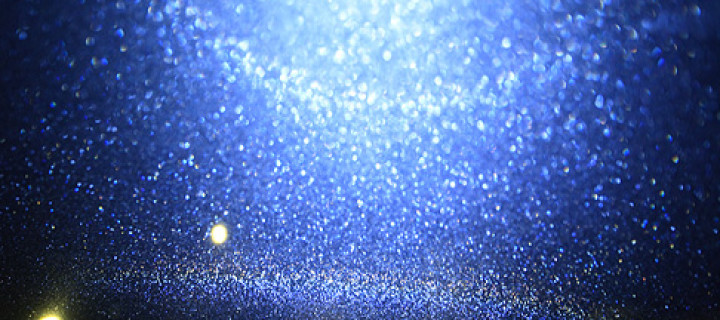
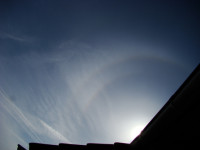
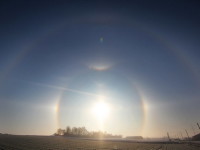
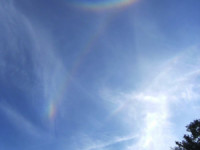
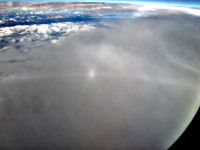
You’ve got to be kidding! 😀
It was a display that just kept on giving no matter what we threw at it. I think there are still some details in the videos to be found. I had to compress the videos quite a bit to make them work and still the upload operation was a pain. There are also many videos that are not online (yet) and I need to carefully comb through them.
The white pillar is a mystery as is the diffuse arc in the anthelic region. Perhaps we can come up with plausible explanations for them. It is also important to remember the possible glass – ice interaction when it comes to raypaths. Riikonen had some interesting ideas about this. Furthermore, the windshield is not a straight plane but has curvature.
Another thing that has caught my eye is the suspiciously fuzzy nature of the upper 22 deg ring and the upper lampvex Parry arc. Also, the 120 deg parhelion appears too close to the light source in some images.
That unidentified pillar in link 5 could be subanthelic arc at about 30-40 degs sun elevation.
Just wondering where someone spots these new surface halos next, nice catch…
Do these occur only if a bright light is in near distace of windshield – or is the streetlight on the pole, enough bright to cause similar effects ?
Someone might want to check next car models – with transparent “panorama roof”…
I have simulated quite a bit but no satisfactory ideas so far. It’s quite bright and to my eye the shape looks like diffuse arcs but that, of course, does not fit at all.
Timo, our streetlight observations have been explained in the post above.
Timo, streelight is actually very bright and makes halos. See one of the videos in Jari’s site where we drive the car.
I did a number of simulations and it seems that the subanthelic arc would have to have been absolutely stellar if it was the “pillar” on the video. The pillar also looks quite diffuse.
For a while I speculated with an idea that maybe there was something reflective on the dashboard that created its own effect but I don’t recall anyhing like that in the car. It would be visible in the other videos as well.
I have not had a chance to enjoy much of your great stuff, but I will shoot my mouth off anyhow: These car windshield and car roof halo displays are spatial. (The light source is divergent.) Or, rather, they are sections of spatial halos. In a spatial halo display you have lots of curves and surfaces in space that are potential halos. But that potential is only realized when those curves and surfaces are occupied by suitable crystals. Your car windshield (or car roof) is supplying the crystals. That is, the spatial halos are only realized where they intersect your windshield; the windshield is giving you a curved slice of the spatial display. That means you can get some very unfamiliar looking halos by fiddling with the lamp-windshield-observer configuration. As you back away from the windshield, you are moving the slice (relatively) toward the lamp, where your intuition from classical halos fails. (Remember, in a spatial display, the classical halos are forming in crystals right up close to your eye. Everything else is apt to look peculiar.) So, for instance, you back away and you are only getting a slice of the parhelia close to the lamp, and their perceived angular distance from the lamp will be much less than 22deg. Or you can get the circumhorizon arc at low lamp elevations. Etc. I bet that, if you study spatial halo diagrams and think about sectioning them with a curved surface (the windshield) in various ways, you will get some insights into your photos.
There is another factor that makes for confusion, but it applies to car roof displays rather than to the windshield display with the light source inside and the observer outside. And it is more annoying than it is interesting. It is that, for car roof halos, the roof itself is usually giving you a reflection. So you have to worry about whether, for instance, you are seeing subparhelia or whether you are seeing parhelia whose source is the light reflected from the roof.
Thanks Walt, that clears up things plenty. Another thing I am confused is the surface inclination. Why we have there Parry arcs, not alternate Parry arcs or something between? I thought about this for 6 hours when driving from Tampere to Joensuu. I was so immersed in it that I hardly noticed making the trip, but there was no conclusion – except to realize that I understand nothing of halos.
Walt, thanks for the input. Interpreting this type of a display is clearly dangerous business as most of the halos look enticingly familiar. However, as you note, the first clue should be the minuscule scale of the halos in this display.
By the way, we did shoot halos that were lit by the reflection of the lamp in the glass. They got us by surprise at first and actually there were so many surprises (and exclamations) that we thought best to mute the videos. 🙂
Oh, now I think I understand it! It is the surface plane that defines the orientation. If the crystals rotate atzimuthally (along the surface plane), they still rotate in Parry orientation relative to each others. Inclining the plane changes nothing.
It is still hard to come to grips with. Intuitively we should have seen singly oriented stuff as well. Anyway, we must now try and repeat these displays and then photograph the crystals and their contact with the plane. Will be a challenge though.
Hi Marko,
Maybe I can expand on your last comment about the effect of the windshield orienting the crystals.
Suppose the windshield is planar, and suppose the crystals are hexagonal prisms each with a face flush against the windshield. Then you only have plate orientations and Parry orientations, and you only have {slices of spatial) plate and Parry halos. BUT: ‘up’ is no longer up. Now up must be the direction perpendicular to the windshield. So we need to obliterate a lifetime of experience dealing with up; we must forget the horizon, forget the direction of any nearby lamp pole, forget our internal gyroscopes. If you can do that, then, in this hypothetical scenario, you have only plate and Parry halos.
But what is the lamp elevation? To get the lamp elevation, you should construct a right triangle, in space, whose hypotenuse is the line segment between the observer and the lamp and whose leg ending at the lamp is in the up direction, i.e., perpendicular to the windshield. That right triangle has an acute angle at the observer and an acute angle at the lamp. The angle at the observer is the lamp elevation. (I would need to say a little more to get the sign right.)
So, for example, if you are looking at your display from outside the car, with the lamp inside, and if the line from you to the lamp is nearly perpendicular to the windshield—a natural choice—then your lamp elevation is nearly 90deg (or -90deg).
But who would have guessed the correct lamp elevation? It is not so easy to obliterate that lifetime of prejudices dealing with up.
very interesting discussion here! Thanks!
Walt opened his mouth, and it all just falls in place. Well, not all, but remarkable portion anyway.
This is remarkable case. I am just starting to read your account and look the videos&photos. It will take time to sink in…
As to the orientation of the display and “up” being up, we quickly noted how the whole display always oriented “vertically” (the line of a pillar) along the lamp – observer axis. It did not matter which way the windshield sloped or where we were. In that sense, that axis dictated the “directions” of the display (but as I just hand held the camera and it was often tilted this may not always appear to be so in the videos). I know this is not what Walt meant with his above description but just a pointer from my memory.
As to the “up” in terms of lamp elevation, it was complex indeed. Learning this info from Walt clarifies things somewhat for me but I could also be totally wrong (Walt must be thinking: when will these boneheads ever learn ;)).
Let’s think of an example. In this video I sit in the car and the camera is at height of my chest half a meter from the window. Riikonen is holding the lamp near the bonnet (CZA), then perpendicular to the window (Lower lampcave Parry) and finally even “higher” (CHA). In this sense the halo world seemed familiar to us even though some oddities occurred but they were easily attributed to the curvature of the glass pane. –> Perhaps a diagram could be drawn that illustrates this and the necessary effective lamp elevations. I will come back to this later. It should be educational.
Now, what Walt says about the elevation of 90 degs seems to be corroborated by this video (lamp pointing upwards and a bit forwards on the seat, the camera near the top of the windshield). It was great seeing the PHC shrink into the 22 deg halo. And then to grow into vast proportions as the effective elevation got lower (I moved the camera towards the bonnet).
The real time experience of seeing the halos was confusing. As we humans tend to have two eyes, the display appeared messy. At these distances and angles the distance between our eyes was enough to create a severe halo double vision. The video camera fared much better. Furthermore, it was really easy to get confused with the angles in the lamp – windshield plane – observer configuration. Especially as you saw the display with your eyes and then look at the video that has been shot from chest height.
I just bought a piece of 8mm hardened glass and will experiment once we get another cold snap. Perhaps the glass can be sprinkled very lightly with kaolin (that Riikonen learned about based on earlier research and Mikkilä tried with his crystal gun is a good nucleation agent) and then see what will happen. Bigger windshields should be available at a reasonable price from scrapyards.
just breathtaking I love the parry, CZA, PHC and CHA the best. I wish I could have done that thing with my car the morning I got up for work.
I wrote up some stuff about plate halos forming on a windshield. You can find it on my site:
https://sites.google.com/a/alaska.edu/walt-tape/unpublished
Look for “Windshield Plate Halos.” There probably will be some surprises.
Since the display reported here, we have had three more. Every time there has been frost on the windshield, there has been also a display. The second display was plates and almost non-existent Parry contribution. Jari took some material on it. Third one was like the one here, but weaker. Subhelic arc and all was there. And fourth one was only poor parhelia.
In the second display we saw parhelic circle curving downwards and were a bit puzzled. It is good to see this now in Walt’s diagrams. I think it would have been a pretty difficult to figure out intuitively. There is also 120° parhelion and its location certainly is not classical as Walt’s diagrams show. But I am still a bit puzzled on how the parhelic circle bents very steeply on the edge of the windshield and aligs itself parallel to that edge.
The 120° subparhelion was seen in the first display (light on the same side as observer). I think it is true 120° subparhelion as the traditional 1-3-4-2-1 raypath can not arise from windshield reflection. 3-2-5-6-8 is another raypath which could use the windshield as a substitute for 2, but it is more low lamp elevation raypath and does not probably apply to this case (also, non-regular hexagons are needed). I saw 120° subparhelion also in the third display, without subparhelic circle. In through light was only parhelic circle without 120 parhelion. This difference supports no windshield reflection for the sub-120°.
The diagrams in Walt’s latest contribution make a world of difference in understanding these slices of spatial halos. The behaviour of the 120 deg parhelia is stunning.
As to the parhelic circle in the videos where it is aligned with the edge of the windshield I can only guess that the curvature of the glass coincides with the spatial PHC contour?
Whenever dealing with this stuff, it is always important to distinguish between transmitted, direct and reflected light.
I have a bit difficulties understanding figures 5 and 9. Why the parhelic circle dots are not continuing in the observer’s view together with parhelia to the edge of the image?
Anyway, the more I look at those illutrations, the more I want to see the next display.
Marko, you are right, the phc does continue to the edge of those images that you mentioned. The phc dots (green) just happen to be hidden by the ph dots (red).
Jari, I was not sure which videos you were referring to, but, in general, you can cope with a curved windshield if you use the `up’ direction that is appropriate to the (small, nearly flat) section of the windshield that you are interested in. Then you will get an observer’s view that is good for that particular small section. But you will have to piece it together with observer’s views for other sections. Sorry, that probably did not make sense.
As for the confusion regarding direct light: I think you and I are using the term ‘direct light’ differently. For me, direct light is non-reflected light. The windshield can be between the lamp and observer (that’s what you call `transmitted light’) or the lamp and observer can both be on the same side of the windshield. As long as the light is not reflecting off the windshield, it is direct light. I am not at all sure that this terminology is the best. The motivation is that I want to be able to take a spatial diagram and insert the windshield at various levels, without impacting the terminology too much.
We just try to follow your terminology, but we do not always get it right. Jari and I have had hours of discussions on certain things you had said in these papers and some emails. So, we do care, but we are just a bit slow.
That windshield curvature issue makes sense (or at least I think so). Makes things certainly more complex concerning simulating. One video where the parhelic circle alings parallel to windshield edge is linked in my earlier comment (the “parhelic circle” link). I have looked at the windshield of my car and there is no change in the curvature on the edge.
It is clear skies here, the temp is dropping sharply. Should be frost on the wind shield soon.
Marko and Jari, I do see the feature in the parhelic circle video that you are talking about. If you want to pick one or two puzzling frames and give me your best estimates for the camera-windshield-lamp parameters, I will run the plate halos for it.
Windshield halo videos are subtle. It is not like being in a too small room in an art museum and not having a short enough lens to photograph the entire painting, so that you take several partial images of the painting and then piece them together. (Or like what you do in a classical solar halo display when you do not have a short enough lens.) In the windshield, every time you move the camera or the lamp you are getting a different display, not just a different part of the same display. The brain inevitably wants to take the various images that you get in the video and piece them together, but in reality there never was a display that looked like what you get when you piece together those images. Piecing together the video frames is like what Lowitz did in his composite drawing of the St Petersburg Display, when he included all the halos seen over the course of several hours. But with the windshield video it is even more confusing, since we are changing not just the lamp elevation but the windshield level as well.
I saw this in Oslo (Norway)!
check out my video on Youtube…
http://www.youtube.com/watch?v=7Wdayfly1Rs